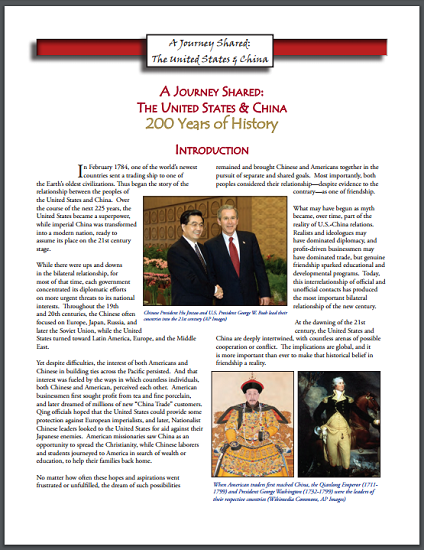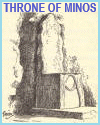Yet despite difficulties, the interest of both Americans and Chinese in building ties across the Pacific persisted. And that interest was fueled by the ways in which countless individuals, both Chinese and American, perceived each other. American businessmen first sought profit from tea and fine porcelain, and later dreamed of millions of new "China Trade" customers. Qing officials hoped that the United States could provide some protection against European imperialists, and later, Nationalist Chinese leaders looked to the United States for aid against their Japanese enemies. American missionaries saw China as an opportunity to spread Christianity, while Chinese laborers and students journeyed to America in search of wealth or education, to help their families back home.
No matter how often these hopes and aspirations went frustrated or unfulfilled, the dream of such possibilities remained and brought Chinese and Americans together in the pursuit of separate and shared goals. Most importantly, both peoples considered their relationship—despite evidence to the contrary—as one of friendship.
What may have begun as myth became, over time, part of the reality of U.S.-China relations. Realists and ideologues may have dominated diplomacy, and profit-driven businessmen may have dominated trade, but genuine friendship sparked educational and developmental programs. Today, this interrelationship of official and unofficial contacts has produced the most important bilateral relationship of the new century.
At the dawning of the 21st century, the United States and China are deeply intertwined, with countless arenas of possible cooperation or conflict. The implications are global, and it is more important than ever to make that historical belief in friendship a reality.
Click here to print (195 pages). Source
|













